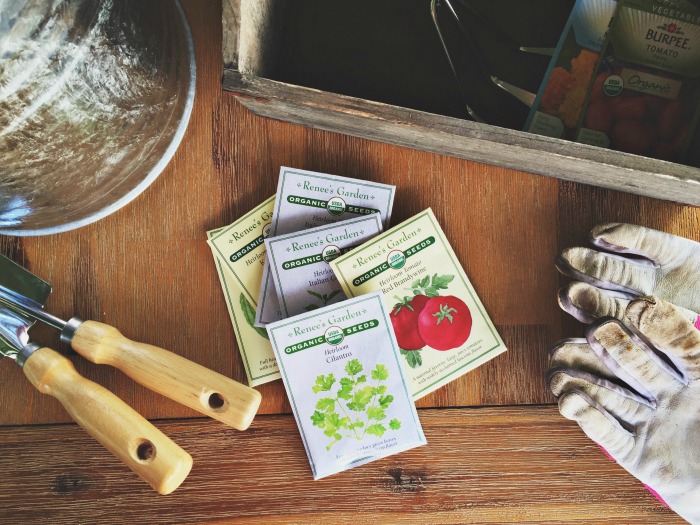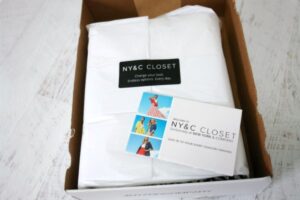Want to start a garden without spending a lot of money? These are some great frugal gardening tips for beginners that can help you get started and save money.

This post was written by Anne Brock. I’m very excited that she was willing to share this great information. I haven’t started a food garden so this wasn’t a topic I felt I could cover. I hope you enjoy her post!
When looking for frugal ways to feed your family, gardening has traditionally been a no-brainer. Now that not everyone thinks they have time or space for gardening, growing some of your own fresh food has become more of a challenge, perhaps even costing you more than buying it at the grocery store. While I cannot guarantee you that following these tips will save you a certain amount of money, I can offer you some practical ideas for gardening without going broke.
Frugal Gardening Tips for Beginners

It’s About the Soil
Building healthy soil is the sustainable approach to gardening backed up by years and years of agricultural practice by leading organic growers like those at the Rodale Institute. If you can afford to buy compost that you can reasonably assume has not been contaminated with pesticides, something like mushroom compost is a wonderful soil amendment.
However, year-round composting of dried leaves and your kitchen’s vegetable scraps can build a wonderfully rich compost, as well. Finding a local farmer who can give you free poultry or rabbit droppings can be another way of getting free nutrients for the soil you are building.
If you buy additional fertilizer, use the most natural additives you can, such as fish emulsion or kelp, instead of those derived from fossil fuels. If you are tight on space or have poor soil where you live, a raised bed is the best place to build your new soil. If your home has a restriction on gardening, check with a local church or community group for free or low-cost rental of gardening space.
Start small
A common gardening mistake is to try growing more food than you can reasonably manage. Gardening takes time and attention, especially when you want to use organic methods like picking off pests by hand instead of spraying your food with poisonous pesticides.
Pick one or two vegetables you like to eat for your first attempt at gardening and focus on those. This minimizes the chance you’ll overspend on your gardening project. You might also want to pick one of the pricier foods to buy organic and try growing that instead to save money. Our family loves bell peppers, so we save considerably over the grocery store price for organic peppers when we keep a few pepper plants in our garden each year.
Related Posts:
Don’t Be An Organic Purist
I wholeheartedly believe organic food is the way to go. However, beginning gardening with the idea that you’ll meet every possible USDA Organic standard and then some may be such a lofty idea that you’ll set yourself up to fail. For instance, composting your own vegetable peelings year around is a frugal way to create compost for your garden.
But if you’re like a lot of us, you may not purchase 100% USDA Organic produce all of the time. Just because you tossed in a conventional banana peel is not a reason to stop composting and utilizing this frugal resource. The same goes for seeds. Ideally, find all organically grown seeds, and definitely look for open-pollinated, non-GMO seeds. However, if your budget is tight and your neighbor offers you free seeds from last year’s vegetable garden, as long as they’re not genetically modified, accept them.

Pace Yourself
Some foods like lettuce do best if you plant, then stagger by reseeding new lettuce every few weeks. This will allow you to stretch a $2 to $3 packet of seeds into a longer season of fresh lettuce that’s just enough for picking and eating, without any waste.
Use Your SNAP Benefits for Gardening
Per federal government guidelines, if you receive federal assistance with food you may also use that benefit to buy plan seeds or plants that will supply food. Again, start small and choose things you will be able to responsibly grow.
However, the benefit of buying a couple of tomato plants that could provide you with fresh tomatoes all summer long seems like an obvious investment that stretches much farther than if you’d spent the same amount on tomatoes alone.
Be Vigilant About Pests
Since insects are the prime culprits who stand to jeopardize your gardening efforts, the better you are at common sense pest control, the better your harvest. This means possibly using row covers, homemade collars or diatomaceous earth to discourage pests around young plants.
It means learning the difference between beneficial insects that you want in your garden and those only there to cause trouble. It means trying every possible organic method of pest control in order to avoid the most toxic pesticide methods used in conventional agriculture.
Related Posts:
- Natural Pest Control Tips
- Easy Organic Gardening Hacks
- 10 Free or Cheap Ideas for Upcycled Seed Starting Pots
Save Seeds & Swap
As your first gardening season comes near a close, try saving seeds from some of your best produce to use again next year. Or swap seeds with other home gardeners. Remember that open-pollinated, heirloom seeds are what you need to continue gardening next year.
Not only do you want to avoid GMO seeds, but also avoid hybrid seeds that will not produce true in the next generation. You may also find a local friend with plants like strawberries, garlic, or herbs that naturally propagate so much that they’d gladly let you dig up starts for your own garden.

Anne Brock grew up in the Ozarks with two full-time family farming parents. She relearned gardening with organic methods and is now teaching her children how to grow some of their own food.
More Eco-Friendly Living Tips




diane says
Great tips…I am not always frugal in my gardening efforts, although I do a few of these. The pest thing drives me nuts. Here is the south, they are a huge problem…my rose bushes are currently suffering from some nasty roseworm infestation that I need to deal with. Blech!
lynn hasselberger says
Great tips! Now… if only I had a green thumb!
Lori Popkewitz Alper says
I’m always so impressed by Anne’s knowledge when it comes to gardening. We have a garden every year and it’s so much fun for our kids. This year has been tough since we had so much snow and the ground is finally thawed. Late start for the garden!
Sara says
You always have such great gardening ideas. Practical and easy to follow. Now I just need to start a garden.
Anne says
Here’s hoping everyone is able to grow a few yummy vegetables in their own gardens this year!
Liz says
What great tips. I only have a small balcony but my husband and I really love putting out some veggies as we get some good sun. I never would of thought to have saved seeds, what a good idea.
thanks!
Liz
Micaela @MindfulMomma says
I’m really looking forward to gardening this year! We make our own soil from compost – nice and healthy!
Jill says
Thanks so much for these helpful pointers, Lisa. I am in the process of starting a garden, so this info. was super helpful. Love your blog!!
Btw, I am a fellow Okie too (:
Marija says
Hugs!
I have been reading your posts for quite some time – and just realized I haven’t posted a comment (that makes me a wee bit creepy, like a side-ways stalker).. so I must stop and say HELLO there.. thank you for posting all these lovely articles.
Being frugal is a life choice, right?
One can not make others see eye-to-eye with everything we chose NOT to own, do, shop for… but when we see the benefits that our budget has from small changes like growing your own, mending the dresses and cooking from seasonally available ingredients – that makes me smile.
Again: it’s great being here.
MArija
Kimbra says
Hi there, Great tips by the way and thank you. I did have a question though.
I’m hoping you can answer it for me since you seem to be pretty
knowledgeable about gardening. Can I use treated wood
(waterproofing) to build a vegetable garden bed?
If you had some insight I would greatly appreciate it.
Lisa Sharp says
I’m honestly not sure.
Heidi says
I love making my own compost because it encourages me to eat healthier! Haha. Gotta eat my vegetables so I have scraps to put into the compost bin 😉